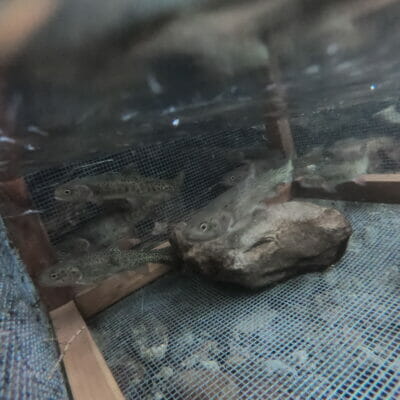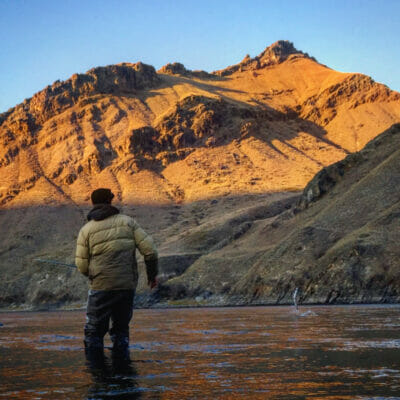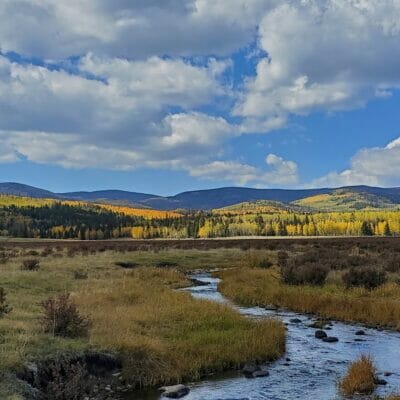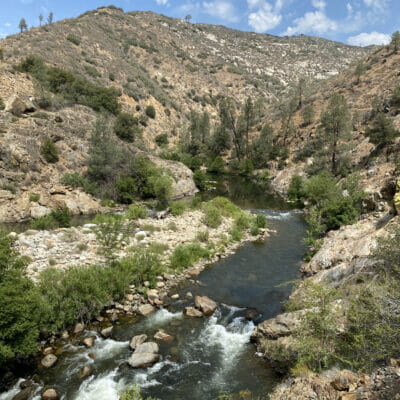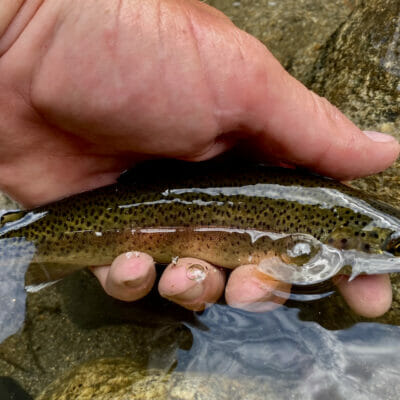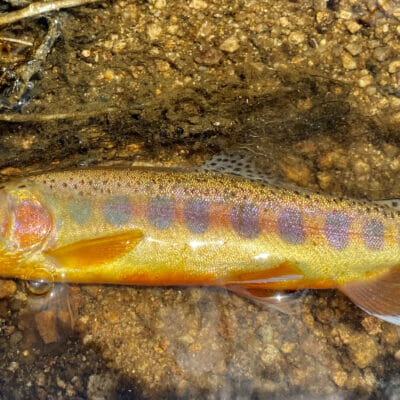by Jeff Yates | September 22, 2021 | Community, Featured
From Sept. 25 through Oct. 2, we’ll bring you dozens of ways to connect — from virtual conversations with important names in conservation and fishing to in-person opportunities to get your hands dirty and your waders wet with local TU members and supporters
“All the land managers and people we meet along the trails seem to appreciate bringing the fish in on horseback. It just has the character of wilderness. It’s good for the environment and it’s a fun thing to do.”
by Nick Halle | September 8, 2021 | TU Business
“Removing the Lower Snake River dams is a move to make sure that steelhead and salmon can reach their native waters and continue to inspire generations to come. They are simply too important not to remove a giant thorn in their side.”
It looked like the brookies were almost certain to extirpate native cutts and that work to improve Jim Creek was a lost cause
by Daniel A. Ritz | August 6, 2021 | Travel
Buhler was right. There was absolutely no mistaking it. The Kern River rainbow has a vibrancy in color, all of its colors, that simply isn’t present in its hatchery imposters. The back of the fish was more densely clustered with darker and more defined spots, the rose coloring along its lateral line was more clearly defined and the most telltale mark, the white edges along its fins, were clearly defined.
Kern River Rainbow Trout (Oncorhynchus mykiss gilberti) Species summary and status: Kern River rainbow trout look similar to Coastal rainbow trout, have a slight gold hint. They have many fine, irregular spots all over their bodies, and larger fish may have a rosy streak along their sides. They can also be identified by the distinctive…
California golden trout (Oncorhynchus mykiss aguabonita) Species summary and status: The state fish of California, California golden trout once occupied about 450 miles of stream habitat in the upper South Fork Kern River and the adjacent Golden Trout Creek. Currently, the trout is native only to two high-altitude watersheds in California’s rugged Sierra Nevada Mountains. The…



